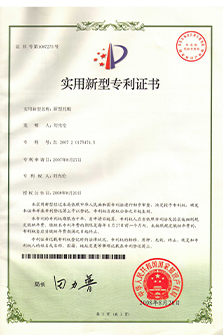 Afrikaans
Afrikaans  Albanian
Albanian  Amharic
Amharic  Arabic
Arabic  Armenian
Armenian  Azerbaijani
Azerbaijani  Basque
Basque  Belarusian
Belarusian  Bengali
Bengali  Bosnian
Bosnian  Bulgarian
Bulgarian  Catalan
Catalan  Cebuano
Cebuano  Corsican
Corsican  Croatian
Croatian  Czech
Czech  Danish
Danish  Dutch
Dutch  English
English  Esperanto
Esperanto  Estonian
Estonian  Finnish
Finnish  French
French  Frisian
Frisian  Galician
Galician  Georgian
Georgian  German
German  Greek
Greek  Gujarati
Gujarati  Haitian Creole
Haitian Creole  hausa
hausa  hawaiian
hawaiian  Hebrew
Hebrew  Hindi
Hindi  Miao
Miao  Hungarian
Hungarian  Icelandic
Icelandic  igbo
igbo  Indonesian
Indonesian  irish
irish  Italian
Italian  Japanese
Japanese  Javanese
Javanese  Kannada
Kannada  kazakh
kazakh  Khmer
Khmer  Rwandese
Rwandese  Korean
Korean  Kurdish
Kurdish  Kyrgyz
Kyrgyz  Lao
Lao  Latin
Latin  Latvian
Latvian  Lithuanian
Lithuanian  Luxembourgish
Luxembourgish  Macedonian
Macedonian  Malgashi
Malgashi  Malay
Malay  Malayalam
Malayalam  Maltese
Maltese  Maori
Maori  Marathi
Marathi  Mongolian
Mongolian  Myanmar
Myanmar  Nepali
Nepali  Norwegian
Norwegian  Norwegian
Norwegian  Occitan
Occitan  Pashto
Pashto  Persian
Persian  Polish
Polish  Portuguese
Portuguese  Punjabi
Punjabi  Romanian
Romanian  Russian
Russian  Samoan
Samoan  Scottish Gaelic
Scottish Gaelic  Serbian
Serbian  Sesotho
Sesotho  Shona
Shona  Sindhi
Sindhi  Sinhala
Sinhala  Slovak
Slovak  Slovenian
Slovenian  Somali
Somali  Spanish
Spanish  Sundanese
Sundanese  Swahili
Swahili  Swedish
Swedish  Tagalog
Tagalog  Tajik
Tajik  Tamil
Tamil  Tatar
Tatar  Telugu
Telugu  Thai
Thai  Turkish
Turkish  Turkmen
Turkmen  Ukrainian
Ukrainian  Urdu
Urdu  Uighur
Uighur  Uzbek
Uzbek  Vietnamese
Vietnamese  Welsh
Welsh  Bantu
Bantu  Yiddish
Yiddish  Yoruba
Yoruba  Zulu
Zulu conveyor tail drum
Understanding the Conveyor Tail Drum An Essential Component in Material Handling Systems
In the realm of industrial material handling, conveyor systems serve as a cornerstone for efficiency and productivity. Among the various components that make up these systems, the conveyor tail drum plays a pivotal role. It is often overshadowed by its more prominent counterparts, such as the drive drum or the belt itself, but its functions are crucial for the seamless operation of any conveyor system.
What is a Conveyor Tail Drum?
The conveyor tail drum, also known as the tail pulley, is located at the end of a conveyor belt system. Its primary function is to support the belt as it returns to the head section of the conveyor. This drum aids in maintaining the tension of the belt and ensures that it moves smoothly along the conveyor track. Despite its seemingly simple design, it is an integral component that contributes to the overall efficiency of the conveyor system.
Functions of the Tail Drum
1. Belt Support and Alignment The tail drum provides the necessary support for the return section of the conveyor belt. By maintaining the proper alignment of the belt, it helps prevent misalignment and potential slippage, which can lead to material spillage and increased wear on the components.
2. Tensioning Proper tensioning of the conveyor belt is vital for its operation. The tail drum helps in distributing the tension evenly across the belt, reducing the risk of sagging or excessive wear in certain areas. This uniform tensioning extends the lifespan of the belt and ensures smooth operation.
3. Idler Functionality In many designs, the tail drum may also serve as an idler that aids in the movement of the belt. This additional function makes it even more important, as it helps facilitate the return journey of the belt while mitigating friction and wear.
4. Protection Against Material Build-Up As materials travel along the conveyor, some can fall off or accumulate around the tail drum. A well-designed tail drum typically features guards or shields that prevent material build-up, ensuring safe and efficient operation.
conveyor tail drum

Materials and Design
The materials used in manufacturing conveyor tail drums are vital. Typically made from high-strength steel or other durable materials, they are designed to withstand the harsh conditions of industrial environments. The surface of the drum may be machined or coated to reduce friction, enhance durability, and facilitate effective belt support.
The design of the tail drum also varies according to the specific application it is intended for. For example, a conveyor system handling heavy bulk materials may require a bigger, more robust tail drum to withstand the extra weight and impact. Conversely, lighter applications may utilize a smaller, more lightweight design.
Maintenance and Best Practices
To ensure that conveyor tail drums function effectively, regular maintenance is essential. This includes checking for wear and tear, ensuring proper alignment, and promptly addressing any signs of damage or malfunction. Regular lubrication of moving parts can also help reduce friction and wear.
Additionally, operators should establish best practices during the installation of the conveyor system. This includes adhering to manufacturer specifications regarding belt tension, drum alignment, and surrounding infrastructure. Proper training for personnel in handling and maintaining conveyor systems will also contribute to the longevity and efficiency of the setup.
Conclusion
In summary, the conveyor tail drum may not be the most visible component of a conveyor system, but its significance cannot be understated. From providing support and alignment to ensuring belt tension and minimizing material build-up, the tail drum is a critical piece in the intricate puzzle of material handling systems. Emphasizing its importance through proper maintenance and thoughtful design can lead to enhanced operational efficiency and extended equipment lifespan, making it an essential focus for industries relying on conveyor technology.
-
Revolutionizing Conveyor Reliability with Advanced Rubber Lagging PulleysNewsJul.22,2025
-
Powering Precision and Durability with Expert Manufacturers of Conveyor ComponentsNewsJul.22,2025
-
Optimizing Conveyor Systems with Advanced Conveyor AccessoriesNewsJul.22,2025
-
Maximize Conveyor Efficiency with Quality Conveyor Idler PulleysNewsJul.22,2025
-
Future-Proof Your Conveyor System with High-Performance Polyurethane RollerNewsJul.22,2025
-
Driving Efficiency Forward with Quality Idlers and RollersNewsJul.22,2025





























